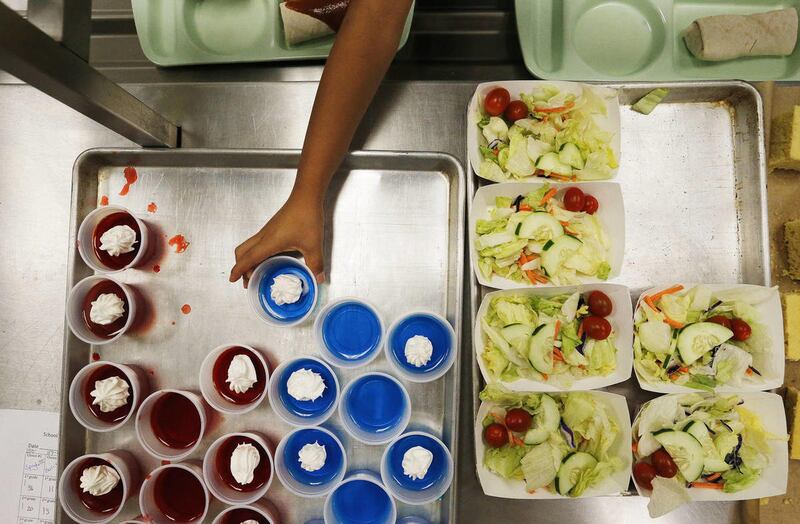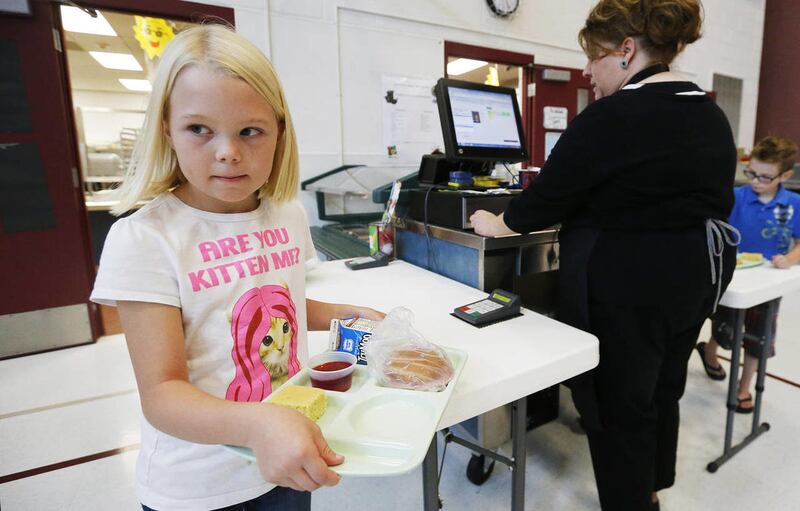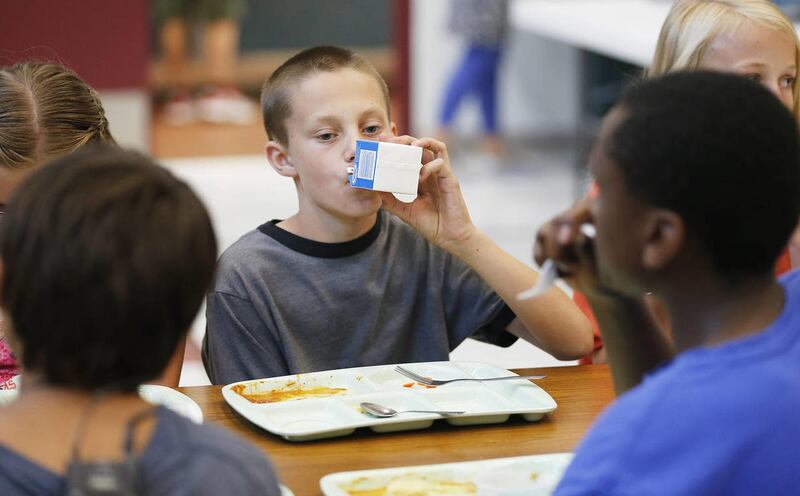We like the traditional feelings that we create in our lunchrooms, but we are also all about progress. We want to do what’s good for kids. … I think it's fabulous to have this quality of research and information come to our school district. – Tammy Horger, Jordan School District's nutrition services coordinator
WEST JORDAN — Roles were reversed Tuesday at Hayden Peak Elementary School, with school district officials getting a lesson on the science behind serving food.
In an effort to improve food consumption at Hayden Peak Elementary, the Utah State Office of Education flew Kathryn Hoy, manager for the Cornell Center for Behavioral Economics and Child Nutrition Programs to Utah to evaluate the school's lunchroom environment.
The school scored above average, Hoy said, though she also made some minor suggestions. And the good news is that most of the changes can be made without additional cost.
"Just by putting whole fruit in a bowl in a high-traffic area, like next to the register, you can increase your fruit sales by 102 percent," she said. "The studies we've done have some really impactful numbers behind it."
The Smarter Lunchroom Movement does not make menu changes but evaluates just about everything else that goes on in the lunchroom — staff interaction, lunch line location, food variation and placement, as well as how foods are named.
The program, funded by the U.S. Department of Agriculture, evaluates educational facilities using six key principles that can now been seen in more than 25 percent of schools across the United States.
"We talk about managing portion sizes, increasing convenience, increasing visibility, enhancing taste expectations, utilizing suggestive selling, and setting smart pricing strategies," Hoy said.
Hayden Peak fifth-grader Avery Herrin, 9, said she's excited to see what changes will be made to the cafeteria.
"My opinion is that it's really good," she said. "I've always liked our lunchroom, but I’m very excited to see the new changes."
The two changes Hoy suggested were lowering the menu boards to eye level for students and using creative names for menu items to encourage kids to try new things.
"Instead of saying, ‘Would you like some carrots?' say, ‘Would you like some X-ray vision carrots?'" she said.
That change alone has proven to double carrot consumption in the past, Hoy said.
Tammy Horger, Jordan School District's nutrition services coordinator, said she's proud of Hayden Peak's above-average results.
"We like the traditional feelings that we create in our lunchrooms, but we are also all about progress," Horger said. "We want to do what’s good for kids. … I think it's fabulous to have this quality of research and information come to our school district."
Second-grade teacher Michelle Miller said she eats Hayden Peak's school lunch every day. Hoy's evaluation, Miller said, was more of a validation of the school's work than anything else.
"They do a good job of balancing meals that include lots of different veggies and lots of different fruits," she said. "They do a great job either way, but it's nice to know someone's coming through to agree."
Jordan School District spokeswoman Sandy Riesgraf said the suggested changes will be taken by the district wholeheartedly and hopefully act as an example for other schools to follow.
"We’re thrilled," Riesgraf said. "But can we do better? Obviously there are things we can do, and I’m sure they will implement them not only in this school but probably all the other schools in the district."
Hoy will continue her evaluation at Lake View Academy in Saratoga Springs on Wednesday and then spend a day training school employees in Davis County.
Email: mcollette@deseretnews.com
Twitter: MirandaCollette












